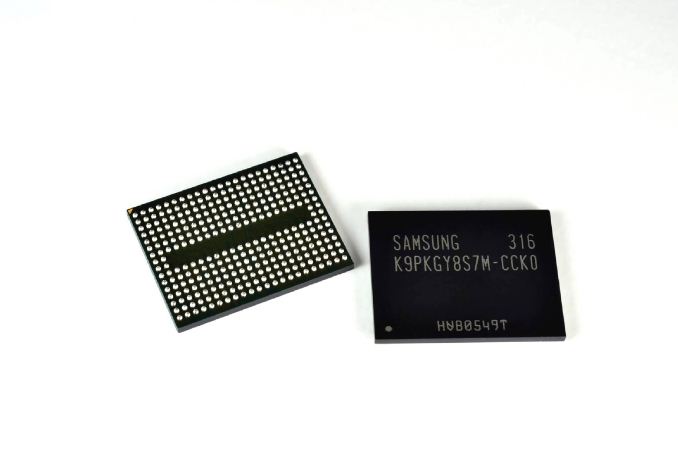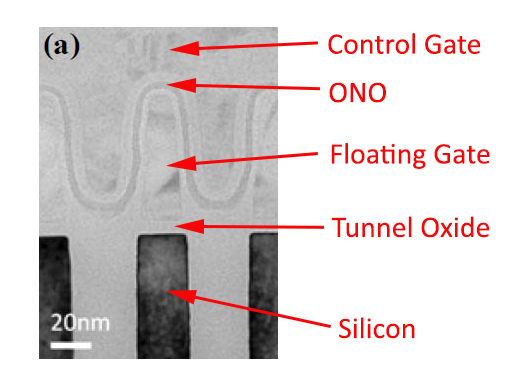The Truth About SSD Data Retention
by Kristian Vättö on May 13, 2015 3:42 PM EST
In the past week, quite a few media outlets have posted articles claiming that SSDs will lose data in a matter of days if left unpowered. While there is some (read: very, very little) truth to that, it has created a lot of chatter and confusion in forums and even I have received a few questions about the validity of the claims, so rather than responding to individual emails/tweets from people who want to know more, I thought I would explain the matter in depth to everyone at once.
First of all, the presentation everyone is talking about can be found here. Unlike some sites reported, it's not a presentation from Seagate -- it's an official JEDEC presentation from Alvin Cox, the Chairman of JC-64.8 subcommittee (i.e. SSD committee) at the time, meaning that it's supposed to act as an objective source of information for all SSD vendors. It is, however, correct that Mr. Cox works as a Senior Staff Engineer at Seagate, but that is irrelevant because the whole purpose of JEDEC is to bring manufacturers together to develop open standards. The committee members and chairmen are all working for some company and currently the JC-64.8 subcommittee is lead by Frank Chu from HGST.
Before we go into the actual data retention topic, let's outline the situation by focusing on the conditions that must be met when the manufacturer is determining the endurance rating for an SSD. First off, the drive must maintain its capacity, meaning that it cannot retire so many blocks that the user capacity would decrease. Secondly, the drive must meet the required UBER (number of data errors per number of bits read) spec as well as be within the functional failure requirement. Finally, the drive must retain data without power for a set amount of time to meet the JEDEC spec. Note that all these must be conditions must be met when the maximum number of data has been written i.e. if a drive is rated at 100TB, it must meet these specs after 100TB of writes.
The table above summarizes the requirements for both client and enterprise SSDs. As we can see, the data retention requirement for a client SSD is one-year at 30°C, which is above typical room temperature. The retention does depend on the temperature, so let's take a closer look of how the retention scales with temperature.
EDIT: Note that the data in the table above is based on material sent by Intel, not Seagate.
At 40°C active and 30°C power off temperature, a client SSD is set to retain data for 52 weeks i.e. one year. As the table shows, the data retention is proportional to active temperature and inversely proportional to power off temperature, meaning that a higher power off temperature will result in decreased retention. In a worst case scenario where the active temperature is only 25-30°C and power off is 55°C, the data retention can be as short as one week, which is what many sites have touted with their "data loss in matter of days" claims. Yes, it can technically happen, but not in typical client environment.
In reality power off temperature of 55°C is not realistic at all for a client user because the drive will most likely be stored somewhere in the house (closet, basement, garage etc.) in room temperature, which tends to be below 30°C. Active temperature, on the other hand, is usually at least 40°C because the drive and other components in the system generate heat that puts the temperature over room temperature.
As always, there is a technical explanation to the data retention scaling. The conductivity of a semiconductor scales with temperature, which is bad news for NAND because when it's unpowered the electrons are not supposed to move as that would change the charge of the cell. In other words, as the temperature increases, the electrons escape the floating gate faster that ultimately changes the voltage state of the cell and renders data unreadable (i.e. the drive no longer retains data).
For active use the temperature has the opposite effect. Because higher temperature makes the silicon more conductive, the flow of current is higher during program/erase operation and causes less stress on the tunnel oxide, improving the endurance of the cell because endurance is practically limited by tunnel oxide's ability to hold the electrons inside the floating gate.
All in all, there is absolutely zero reason to worry about SSD data retention in typical client environment. Remember that the figures presented here are for a drive that has already passed its endurance rating, so for new drives the data retention is considerably higher, typically over ten years for MLC NAND based SSDs. If you buy a drive today and stash it away, the drive itself will become totally obsolete quicker than it will lose its data. Besides, given the cost of SSDs, it's not cost efficient to use them for cold storage anyway, so if you're looking to archive data I would recommend going with hard drives for cost reasons alone.














86 Comments
View All Comments
sheh - Thursday, May 14, 2015 - link
Run by whom on what type of flash or drive?toyotabedzrock - Wednesday, May 13, 2015 - link
It would be nice to know what the data retention is on partly worn drives or drive using TLC and MLC and at smaller node sizes. Also testing of 3D nand. After the issues Samsung had this all seems more important.Also do these standards mean drives will be readable when their nand is worn out now? Most drives seem to suicide instead of going into read only mode.
toyotabedzrock - Wednesday, May 13, 2015 - link
Also the 8hour a day on time needs to end. Consumers leave things on 24/7 and while it is not in constant use most people leave things on.mkozakewich - Wednesday, May 13, 2015 - link
But it's not being written to constantly in that case. Busy time is different from idle time. Unless they're constantly defragging, but then there's a problem there anyway.JonnyTurtle - Wednesday, May 13, 2015 - link
Great article. Thank you!Gc - Wednesday, May 13, 2015 - link
"For active use the temperature has the opposite effect. Because higher temperature makes the silicon more conductive, the flow of current is higher during program/erase operation ...."If the benefit is only for active erased/written cells, then all the other unwritten cells are inactive?
If so, then overall a hot computer environment is not beneficial unless the entire drive is rewritten periodically. So even a read-only drive will eventually wear out.
Do SSDs monitor temperature so they can tell how often they need to rewrite the inactive cells?
Too bad the Intel table doesn't go lower, it would be interesting to see how much data retention improves with cold temperature storage. When an SSD becomes obsolete, it might be convenient to use it for archival storage, in the freezer if necessary.
mkozakewich - Wednesday, May 13, 2015 - link
It's basically impossible that you'll go 100 TB of writes without using and reusing every available block in the chips. The controller is always collecting garbage and clearing things out. Wear-levelling algorithms try to keep everything worn down similarly.Also, once written, the data will remain in those cells for only a limited time, regardless of power (unless some drives scan for weak cells and refresh them). You're kind of relying on moving data around in order to avoid bit-rot over the course of ten years. If you remember where all your data was in 2005, though, it's likely you've moved it all several times.
CountDown_0 - Wednesday, May 13, 2015 - link
Great article, Kristian. Thanks for clearing this up!zap117 - Wednesday, May 13, 2015 - link
I'm a little bit confused by these results. Traditional floating gate structures use doped polysilicon (a conductor) as the storage layer. So I would expect the conductivity to go down as you increased the temperature (conductivity of conductors decreases with increasing temperature).Also, it's worth pointing out that the underlying technology is not the same from one SSD to another. For instance, Samsung's 850 series SSDs use Charge Trap Flash, which replaces the polysi storage layer with silicon nitride, which is an insulator. So because it is an insulator, I would not expect the stored electrons to move around much, even if there was a short between the charge trapping layer and the channel. So these results may or may not at all be relevant depending on which particular SSD you own.
Kristian Vättö - Thursday, May 14, 2015 - link
You are correct that the conductivity of the floating gate actually decreases with temperature due to increased resistance. However, my understanding is that the conductivity of the silicon dioxide (i.e. tunnel oxide) increases with temperature, which results in increased charge trapping in the oxide that alters the cell voltage. The topic is certainly more complex than what reads in the article.